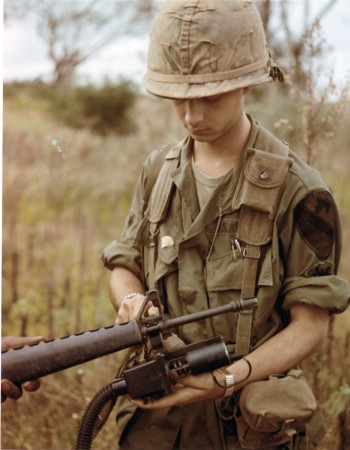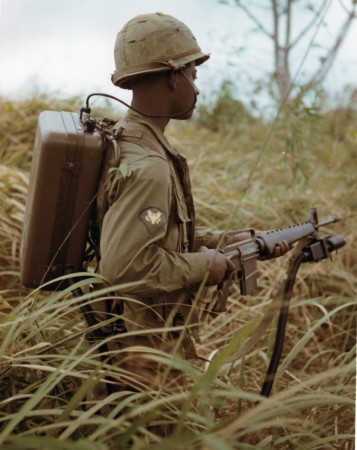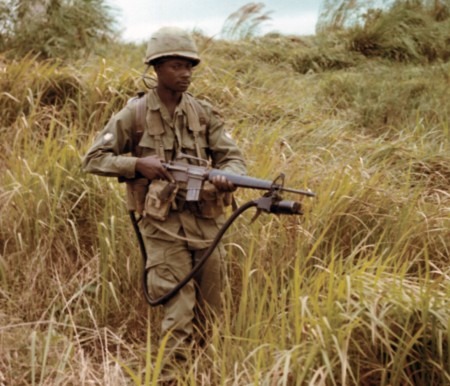
by Tom Laemlein
In the rather deadly game of “hide & seek” played by the US Army and the Viet Cong led to a rather bizarre technical innovation during the Vietnam War: the people sniffer. The detection technology was developed by General Electric for the US Army’s Chemical Corps. “People Sniffer” technology was based on locating hidden enemy troops by detecting the chemical traces of urine and sweat. The sweatier or more piss-soaked that the VC were, so much the better for the People Sniffer, if not so much the operator!

The first version of the People Sniffer was the XM-2 personnel detector man-pack (also known as the E63 man-pack personnel detector). The XM-2 consisted of a backpack-mounted sensor, coupled with an air intake tube mounted on the end of a M16 rifle. Deployed during 1967, reports are that the XM-2 was often a bit too sensitive, and would only pick up the sweat odors of its user. This, coupled with the rather loud “ticka-ticka-ticka” noise that sensor made while in use rather gave the whole game away. Understandably, troops were uncomfortable carrying a heavy noisemaker into an ambush zone. So the XM-2 man-portable system gave way to the much more powerful XM-3 airborne platform, normally mounted on a helicopter. The XM-3 delivered much better results, although the Viet Cong eventually learned ways to deceive the device’s ability to detect sweat, urine and campfire smoke.
If you can find an XM-2 “personnel detector” out there somewhere, it will make a great accessory for your vintage M16A1 rifle—granted you can find one of those.
https://www.youtube.com/watch?v=w2W6IbdPTgQ
Tom Laemlein runs Armor Plate Press, a military history publishing company that specializes in producing photo studies of 20th Century weapons systems. Find his work at www.armorplatepress.com.


After 9/11 I was working with an engineer in the Portland District Office of the Army Corps of Engineers who had worked with the helicopter mounted version of the people sniffer system. He said that they had frequently called in airstrikes on triple canopy jungle when they got strong detections but couldn’t see a target. He said they blew up quite a few elephants. I can’t remember if he said the unit detected carbon dioxide exhalations or methane.